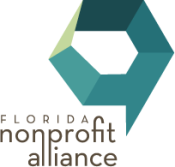
Many a well-intentioned charitable advocate has been sidelined by colleagues, board members, and others who blurt out (incorrectly) “we can’t do that” when it comes to advancing public policy solutions. Most of us know the law on advocacy is virtually wide open and the few 501(c)(3) restrictions on lobbying, while real, are easily managed. Yet, longstanding confusion prevails, hindering the ability of charitable organizations to mobilize and have their greatest impact. The Florida Nonprofit Alliance has taken to social media to set things straight.
Earlier this month, the Florida state association of nonprofits presented a LinkedIn post titled “Effective Advocacy.” It opens with this simple, but profound, statement: “Advocacy can accomplish what direct services alone cannot. Used effectively, advocacy can bring attention to legislative gaps, address needed reforms, preserve nonprofit resources, and more.” That statement explains Why nonprofit advocacy is needed.
The How is explained this way: “Advocacy encompasses a wide range of activities designed to influence public opinion and policy.” The post provided the following examples:
✅ Public education
✅ Grassroots organizing
✅ Nonpartisan voter engagement
✅ Litigation
✅ Coalition building
✅ Lobbying

Since misunderstanding is rife, that last item deserved additional explanation. “Lobbying is a form of advocacy that attempts to influence specific legislation. Nonprofits can, and often should, lobby at all levels of government. The federal government supports lobbying by 501(c)3 organizations through the 1976 Lobby Law and 1990 IRS regulations.” To drive the points home, the post even includes a simple chart defining the difference between advocacy and lobbying.
Thousands of webpages are devoted to explaining every nuance of lobbying limitations and advocacy activities. This simple post by the Florida Nonprofit Alliance cuts through all of that clutter to make the basic point that yes you can advocate on behalf of your mission.
